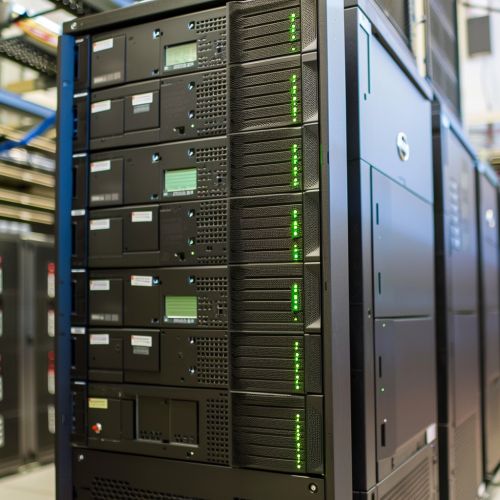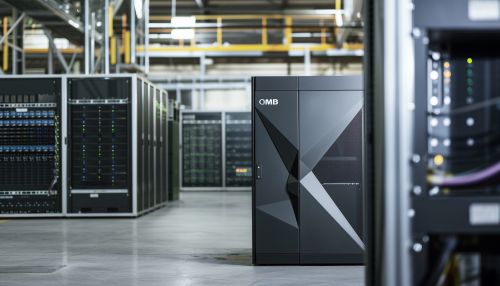IBM System i: Difference between revisions
(Created page with "== Overview == The IBM System i is a midrange computer platform from International Business Machines Corporation, a multinational technology and consulting corporation. It is part of the company's Systems brand, which also includes the System z, System p, System x, and BladeCenter platforms. The System i platform was first introduced in 1988 as the AS/400 (Application System/400), and it has been continually updated and renamed over the years. The System i name...") |
No edit summary |
||
| Line 3: | Line 3: | ||
The IBM System i is a midrange computer platform from [[IBM|International Business Machines Corporation]], a multinational technology and consulting corporation. It is part of the company's Systems brand, which also includes the System z, System p, System x, and BladeCenter platforms. The System i platform was first introduced in 1988 as the AS/400 (Application System/400), and it has been continually updated and renamed over the years. The System i name was introduced in 2006 as part of a rebranding effort by IBM. | The IBM System i is a midrange computer platform from [[IBM|International Business Machines Corporation]], a multinational technology and consulting corporation. It is part of the company's Systems brand, which also includes the System z, System p, System x, and BladeCenter platforms. The System i platform was first introduced in 1988 as the AS/400 (Application System/400), and it has been continually updated and renamed over the years. The System i name was introduced in 2006 as part of a rebranding effort by IBM. | ||
[[Image:Detail-77663.jpg|thumb|center|A photo of an IBM System i server.|class=only_on_mobile]] | |||
[[Image:Detail-77664.jpg|thumb|center|A photo of an IBM System i server.|class=only_on_desktop]] | |||
== Architecture == | == Architecture == | ||
Latest revision as of 23:01, 6 May 2024
Overview
The IBM System i is a midrange computer platform from International Business Machines Corporation, a multinational technology and consulting corporation. It is part of the company's Systems brand, which also includes the System z, System p, System x, and BladeCenter platforms. The System i platform was first introduced in 1988 as the AS/400 (Application System/400), and it has been continually updated and renamed over the years. The System i name was introduced in 2006 as part of a rebranding effort by IBM.


Architecture
The IBM System i platform uses a unique architecture known as TIMI (Technology Independent Machine Interface), which is designed to be independent of the underlying system hardware. This allows applications written for the System i to run on any System i hardware without modification, providing a high level of backward compatibility. The TIMI architecture is implemented in a layer of microcode that runs directly on the system's processors, abstracting the hardware details from the operating system and applications.
Operating System
The primary operating system for the IBM System i is IBM i, a proprietary, integrated operating system that includes a database, security features, and other services. IBM i is designed to be easy to use and manage, with a high level of automation and integration. It supports a wide range of applications and programming languages, including RPG, COBOL, C, C++, Java, and .NET.
Hardware
The IBM System i hardware is based on IBM's POWER architecture, a RISC (Reduced Instruction Set Computing) architecture that is known for its performance and scalability. The System i hardware includes processors, memory, storage, and networking components, all integrated into a single system. The hardware is designed to be highly reliable and secure, with features such as error checking and correction, redundant components, and hardware-based encryption.
Applications
The IBM System i platform is used in a wide range of industries and applications, including manufacturing, distribution, retail, finance, and healthcare. It is particularly well-suited for business-critical applications that require high reliability, security, and performance. The System i supports a wide range of software, including ERP (Enterprise Resource Planning) systems, CRM (Customer Relationship Management) systems, and other business applications.
Legacy and Impact
The IBM System i platform has a long history and a significant impact on the IT industry. It introduced many innovations, such as an integrated database, a high level of system integration, and a technology-independent architecture. Despite its age, the System i continues to be used by many businesses around the world, and it has a loyal and active user community.
